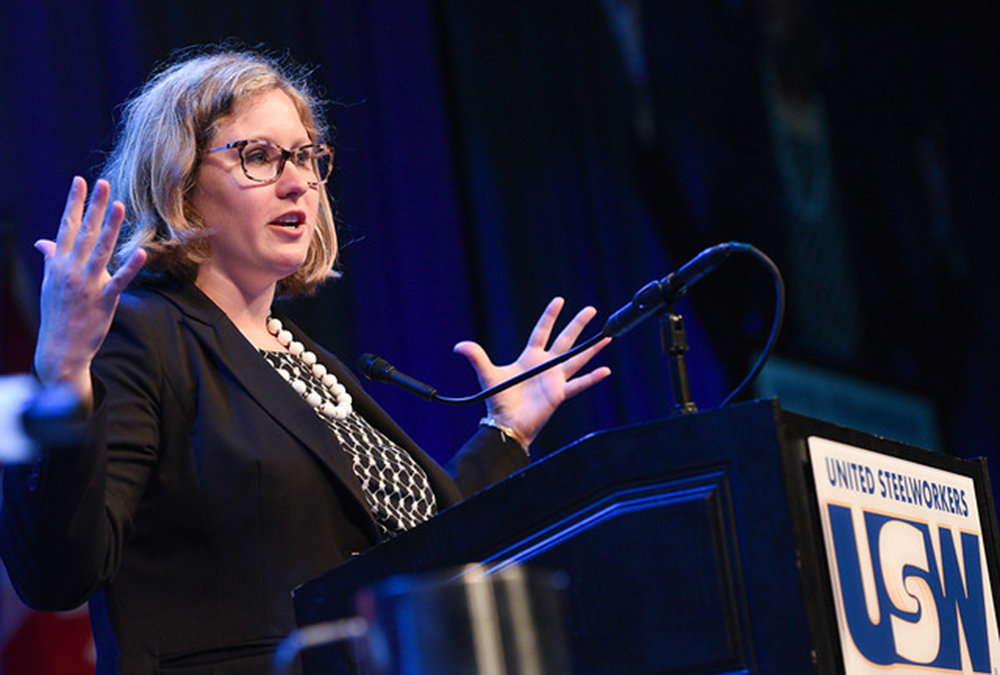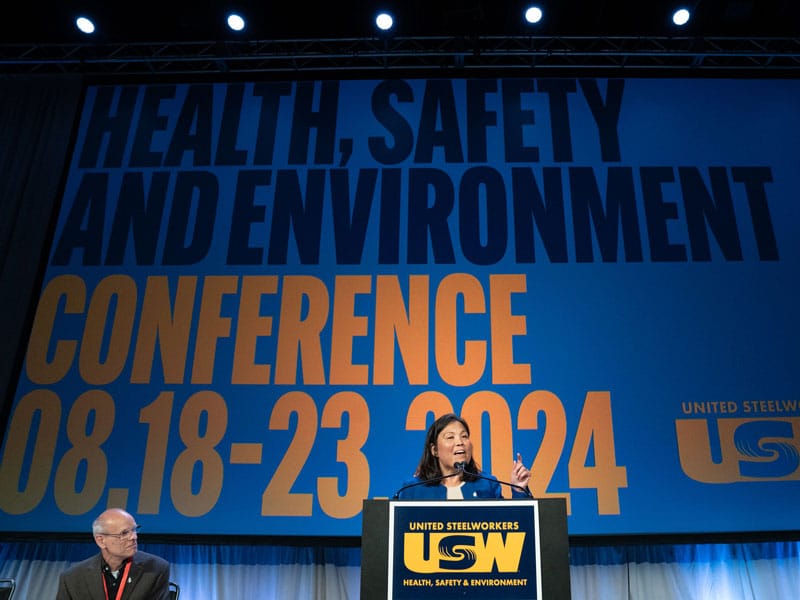Workplace violence in health care highlighted at USW health and safety conference
The opening session of the USW Health, Safety and Environment Conference last week highlighted the epidemic of workplace violence in health care by urging attendees to support a vital bill working its way through the U.S. Congress.
The Workplace Violence Prevention for Health Care and Social Service Workers Act would mandate that the federal Occupational Safety and Health Administration (OSHA) create a national standard requiring health care and social service employers to develop and implement a comprehensive workplace violence prevention plan.
“There’s a lot more to safety than just making ‘safety’ your first slide on the deck,” USW International President Tom Conway told the packed ballroom in Pittsburgh on Monday, Sept. 9. “The work that you’re doing is crucial to the lives of our members. Your work makes sure they go home to their families.”
A Thursday morning panel on workplace violence in health care took a deeper dive into the unfortunate necessity of this legislation. Since 2012, violence against health care workers has increased by 30 percent, a humbling statistic mentioned in a powerful video screened to the conference attendees.
USW Director of Regulatory and State Policy Anna Fendley, based in Washington, D.C., spoke to the health and safety activists about the union’s work behind pushing for this to change. Members and staff, aided by the Rapid Response department, been meeting in person with representatives both in the nation’s capital and in offices across the United States as well as making phone calls to representatives, urging them to vote ‘yes.’

USW Director of Regulatory and State Policy Anna Fendley talks to the Health, Safety, and Environment Conference about the Safe Jobs Now campaign.
Ryan Fairley, a former paramedic who now works in the union’s organizing department, spoke on the panel about his personal experience dealing with violence as an emergency responder.
Once, while responding to an overdose incident, he almost became a statistic when the patient he was treating and transporting became violent, ripping out their IVs and thrashing their arms. Alone in the back of the ambulance, Fairley was vulnerable, and getting the driver to phone police for assistance was no easy task. One way to help remedy this is through mandatory training on de-escalation and communication between emergency responders, including dispatchers. An enforceable standard, like the one proposed in the bill, would be key to achieving this and making sure.
“Workplace violence should not be ‘just part of the job,’” he told the crowd, which included health care industry members.
USW’s Tamara Lefcowitz updated the conference attendees on the work of the Health Care Workers Council, which strives to do more than serve its own industry.
“The council doesn’t limit advocating for health care members to employers and legislators,” she said. “We want to create connections across all industrial sectors and build solidarity with our union brothers and sisters.”
The council has also been pounding the pavement with the union’s Safe Jobs Now campaign to make sure the bill gets moved through the House and onto the Senate. To Lefcowitz, if anyone can do it, it’s the Steelworkers.
“The USW made its reputation on being a fighting union,” she said.

A variety of health care industry workers attended the USW Health, Safety, and Environment Conference.
Rapid Response Director Amber Miller, who started her union career at a brass foundry in Ohio, reiterated Lefcowitz’s focus on unity and recognizing that an injury to one truly is an injury to all.
“Our solidarity across our sectors is our strength,” Miller said, “and we need that in order to push this forward.”
To learn more about the Safe Jobs Now campaign and how you can help move the Workplace Violence Prevention for Health Care and Social Service Workers Act through Congress, click here.
By clicking Sign Up you're confirming that you agree with our Terms and Conditions.
Recent News Articles
Want to Learn More?
See how the USW is making a real difference in our communities and our workplaces.

